Qinling Mountains Becoming China’s Central National Park
National Park refers to the natural area, which needs special protection, management, and utilization, designated for the purpose of protecting the completeness of one or more typical ecological systems and providing ecological tourism, scientific research and environmental education. It is said that the concept of National Park is fi rst put forward by American artist Geoge Catlin. In 1832, on his way to travel, he felt anxious for the West America Development’s influence on Indian civilization, wild animals and plants, as well as wilderness. He wrote “If the government adopts some protective policies and sets a big park, a national park where there are human beings and wild beasts and everything is in original and embodies the beauty of nature, they could be well protected.” After that, the expression was widely used across the world. Although, different countries have different definitions to National Park, the basic meaning refers to a form of natural reserve. According to this standard, Qinling, located at the center of China territory and famous for the abundance, uniqueness and rareness, without doubt, is the Central National Park of China.
At present, there are 26 natural reserves in Qinling region, including ten national natural reserves. The establishment of these natural reserves has played immeasurable role on the protection of Qinling’s animal and plant resources.
Taibai Mountain National Natural Reserve
Taibai Mountain National Natural Reserve is located at the junction of Taibai County, Meixian County, and Zhouzhi County, in Shaanxi, with the main peak, Baxiantai Peak, at the elevation of 3,767.2m. The reserve was established in 1986, covers an area of 56,325 hectares with the length of 45km and the width of 34.5km. It is one of the first-batch national natural reserves which are established earliest. The major protection objectives in it are forest ecologic system as well as natural and historic relics. The reserve is located at the central section of Qinling Mountains, and is the convergence and transition zone of the living beings of the Northern China, Central China and Qinghai-Tibet Plateau. The reserve has abundant animal and plant resources with over 2,000 kinds of higher plants, including 21 kinds of national key protected plant such as cercidiphyllum japonicum, tetracentron sinensis, circaeaster agristis, Larix chinensis, etc., and over 270 kinds of higher animals, including over 20 kinds of national protected animals such as Ailuropoda melanoleuca, Budorcas taxicolor, leopard, etc. Since the influence of mountain condition and general circulation, the reserve has obvious climatic difference in the northern and southern parts, has typical character of sub-alpine climate, and forms obvious vertical variation and climatic zones. In terms of vertical climatic variation, warm temperate zone, temperate zone, cold temperate zone and subfrigid zone appear in turn from low altitude to high altitude. Complex climatic condition is major factor which causes the biodiversity of Taibai Mountain. Since the influence of climatic variation, the environment and biologic factor such as landform, earth, vegetation, animal, plant, etc., also form corresponding vertical variation. In addition, many relics of quaternary glacial landform which has important value for the research of geologic evolution also exist in the reserve.

Taibaishan Mountain Nature Reserve
Foping National Natural Reserve
Around the world, if you want to see large wild animals under natural state, Africa and North America are the first choice. But in China, it should be Qinghai-Tibet Plateau. However, there is another unmissable place, which is Qinling. To be precise, it is Foping National Natural Reserve which is located at the central section of the south slope of Qinling, northwest of Foping County, Shaanxi. The reserve covers a planning area of 35,000 hectares with the length of 24.8km from east to west and the width of 22.0km from south to north. It is a natural reserve with the aim of protecting the wild animals which have panda as their core. There are totally 265 kinds of wild animals, including four kinds of Class I key national protected animal species such as panda, Budorcas taxicolor, Rhinopithecus roxellana, Panthera pardus, and 33 kinds of Class II key national protected animal species. There are totally 1,596 pandas live in China, among which, Shaanxi has 273. And Foping County which covers a small area has 96 pandas living in. There is one panda in average 2.5km in the core area of the reserve, and the distribution density tops the whole country. Foping County is now famous for being easy to encounter with Rhinopithecus roxellana. In addition, Foping County is the most important panda research base
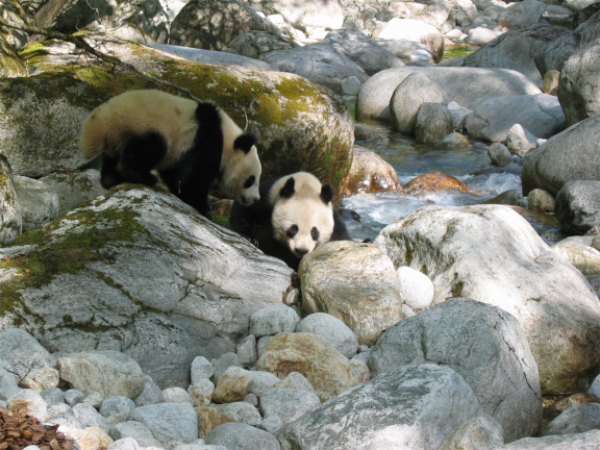
Pandas in the Foping National Natural Reserve
Changqing National Natural Reserve
Changqing National Natural Reserve, covers a total area of 30,000 hectares, is located in the north of Yangxian County which is on the south slope at the central section of Qinling. As a forest and wild animal type natural reserve, it is established mainly to protect panda. Panda, Plegadis falcinellus, Rhinopithecus roxellana, and Budorcas taxicolor, are called “Four Treasures of Qinling”, and the most complete distribution areas are only Changqing National Natural Reserve and the adjacent Foping National Natural Reserve. Any one kind of the “Four Treasures of Qinling” is easy to see in Changqing National Natural Reserve, especially Qinling panda. Qinling panda has a high distribution density in the reserve. Besides panda, Plegadis falcinellus, Rhinopithecus roxellana, and Budorcas taxicolor, there are totally 2,039 kinds of seed plants, including 31 national key protected plants. It needs to be specially emphasized that Changqing is famous for its beauty of mountain, but is more famous for its beauty of water. The water here is not only clean and transparent and also abundant in water yield. Waterfalls and pools could be seen in gullies and valleys, and each pool has different shape and color sending out the mysterious fl avor which can only be felt in Jiuzhaigou Valley, Sichuan. Thanks to the most beautiful mountains and water as well as the most abundant plant resources, Changqing National Natural Reserve becomes the genuine paradise of Qinling wild animals and plants.
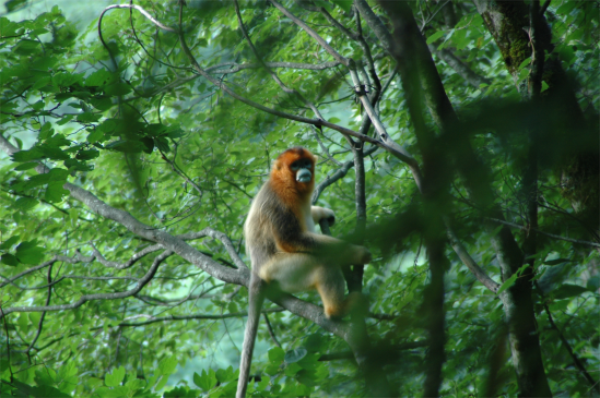
Golden Monkey (Rhinopithecus roxellana) in the Changqing Nature Reserve
Hanzhong Plegadis Falcinellus National Natural Reserve
Hanzhong Plegadis Falcinellus National Natural Reserve, covers a total area of 37,549 hectares, is located in Hanzhong Area. At the bank of Hanjiang River, it extends across Yangxian County and Chenggu County with its main body in Yangxian County. Its major protection objective is Plegadis falcinellus and its habitat. That is the first time to name a national reserve with the name of a bird in China. In May 1981, Chinese scientist found Plegadis falcinellus, which has been deemed dying out, in Yangxian County, Shaanxi at the southern foot of Qinling. Through the untiring 28-year protection, the number of wild Plegadis falcinellus has increased to over 500 from 7, and the distribution area also spread to all 11 counties of Hanzhong Area from a small village. Simultaneously, the number of captive-bred Plegadis falcinellus also came to 512, which makes the total number of Plegadis falcinellus came to over 1,000. The local residents who paid high price for the protection of Plegadis falcinellus should not be forgotten when people are elated for the great breakthrough of the protection of Plegadis falcinellus. In order to protect the habitat of wild Plegadis falcinellus, the local Yangxian County government specified that chemical fertilizer and pesticide are not allowed to be used in the habitat of wild Plegadis falcinellus, and the government also limits the development of modern industry. Although Yangxian County owns the reputation of “Hometown of Plegadis falcinellus”, it paid high price in local economy. To people’s relief, Plegadis falcinellus could be seen around the old county town. The old land fl owing with milk and honey which is famous for black rice and fragrant rice now shoots to fame due to Plegadis falcinellus.
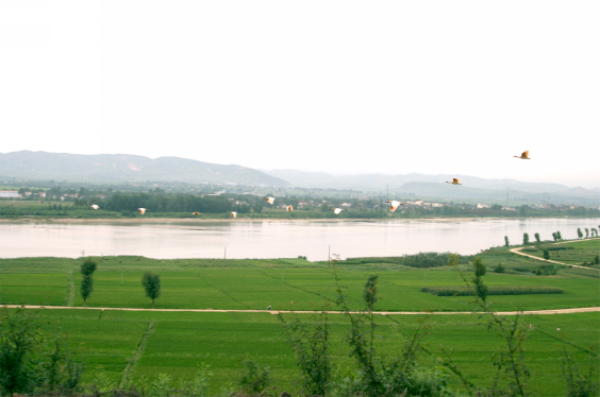
Crested ibis (Plegadis falcinellus) in the Nature Reserve
Old County Town National Natural Reserve
“The old county town” located in Zhouzhi County, in the deep of Qinling, used to be a county town which has thousands of population.
In 1922, the county town which existed for nearly 100 years was abandoned due to banditry. Now, there are only 35 families and the Administration of Old County Town National Natural Reserve.
The Old County Town National Natural Reserve is connected with Zhouzhi National Natural Reserve in the east, connected with Taibai Mountain National Natural Reserve in the north, is an important circle for connecting four insular national natural reserves, and playing an important role on the gene exchange and population increase of integrated Qinling panda. The biggest excuse for the establishment of the Old County Town National Natural Reserve was to establish a corridor zone for Qinling panda. Since then, “panda’s corridor zone” became a stylish expression in the field of living being protection, and “Qinling reserve group” also became famous around the world due to the establishment of the Old County Town National Natural Reserve. Today, the famous “panda’s corridor zone” begins to play its irreplaceable role. To some degree, it is the human evacuation nearly 100 years ago that avoided the misfortune of the dying out of Qinling panda. Besides being the important tie of Qinling reserves group, the Old County Town National Natural Reserve has its special signifi cance in education, and is the good destination for the deep introspection of the harmoniousness of human beings and the nature.
Qingmuchuan National Natural Reserve
Located in Qingmuchuan Town, the southern foot of Qinling, Ningqiang County in Hanzhong Area of Shaanxi, Qingmuchuan National Natural Reserve is a natural reserve for the protection of the rare wild animals such as panda, Rhinopithecus roxellana, Budorcas taxicolor, etc., and their habitats. The reserve covers a total area of 10,200 hectares with the width of 15.5km from south to north and the length of 28km from east to west. Besides abundant animal and plant resources, the attractive thing is that two kinds of primates, Rhinopithecus roxellana and macaque which never live together, become close neighbors here and get along well. It becomes a mystery attracting the high attention of the related experts and scholars. Thus the reserve was deemed as a place with great value for research and protection, and is an important base for carrying out the research of biocenologic and wildfauna system.
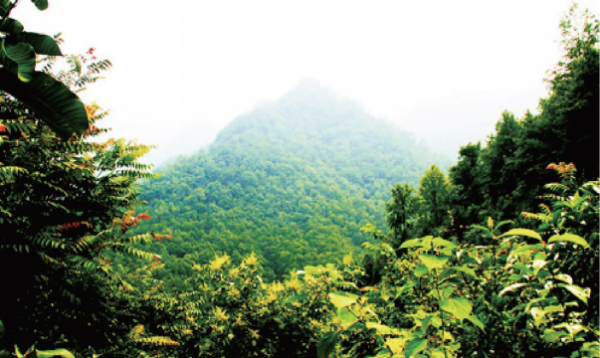
Qingmuchuan National Natural Reserve
Zhouzhi National Natural Reserve
Located at the southern foot of Qinling, Zhouzhi County, to the southwest of Xi’an in Shaanxi, Zhouzhi National Natural Reserve covers an area of 56,393 hectares with the major protective objectives of the rare animals, such as Rhinopithecus roxellana, and their habitats. With high mountains, numerous valleys and gullies, imposing manner, and flourishing forest, the reserve has lots of beautiful and unique natural scenes. Among which, the most attractive highspot is a group of wild Rhinopithecus roxellana which is very familiar with human beings. Here, Rhinopithecus roxellana and human beings established harmonious relations, so people could closely contact Rhinopithecus roxellana, carry out mutual exchange, and be enchanted by the fun of tease monkeys while they enjoy the nature. Another highspot is that there is an alm, which was called alp sludgy lake, in the reserve. The alm covers an area of 15 hectares at the elevation above 2,300m. With the open terrain which is high at surrounding area and low at the center, it is easy to form marsh here, which makes the alm get the name of alp sludgy lake with Budorcas taxicolor, black bear, etc., living here. The third highspot is the diversified vegetation. The reserve is full of tall trees, low rattan and shrub, red autumnal leaves, as well as strange and rare wild fruits. Besides the beautiful scenes in the reserve, the Jade Emperor Pagoda, Damang River, Yinjiaping, Dashugou Valley, Black River Forest Park, etc., at the surrounding region are all famous scenes of Qinling.
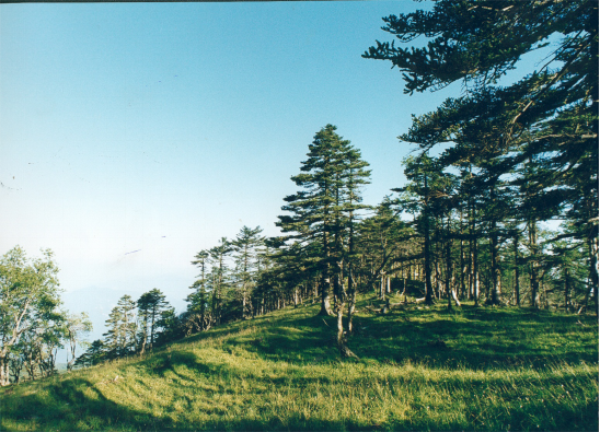
Zhouzhi National Natural Reserve
Niubeiliang National Natural Reserve
Located at the junction of Chang’an District, Zhashui County, and Ningshan County, Niubeiliang National Natural Reserve is at the easternmost section of Qinling in Shaanxi with a total area of 16,520 hectares. It is the only national natural reserve with the protective objectives of Budorcas taxicolor and its habitat. Simultaneously, Niubeiliang National Natural Reserve is one of the most important sources of water conservation of Xi’an City and the Southern Shaanxi. With the elevation of 2,802m, Niubeiliang is the tallest peak at the east section of Qinling. Niubeiliang gets its name due to the shape of the main peak which is like the back of cattle, and the reserve gets its name due to the name of Niubeiliang. The reserve is one of the major habitats of Budorcas taxicolor (Qinling takin), Class I protected animal species, which is famous around the world.
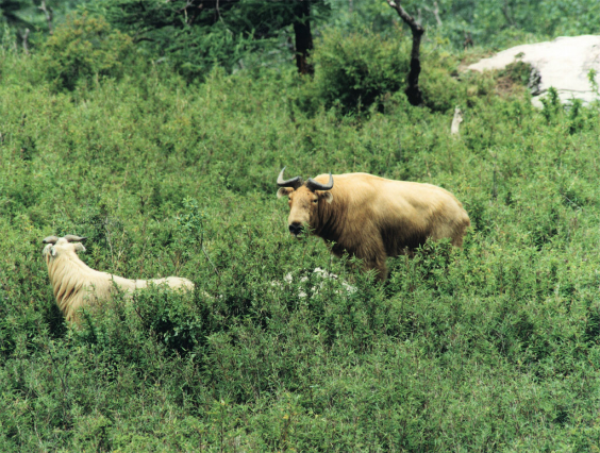
Qinling takin (Budorcas taxicolor) in the Niubeiliang National Nature Reserve
Tianhuashan Mountain National natural Reserve
Located in Ningshan County, on the southern foot of the middle section of Qinling, Tianhuashan Mountain National Natural Reserve covers a total area of 25,458 hectares with the width of 17.3km from east to west and the length of about 24.5km from north to south. With the forest coverage of 93.7%, the reserve has very abundant animal and plant resources. There are over 700 kinds of known plants and over 260 kinds of wild animals, among which, dozens of belong to national key protected animal and plant specie, especially the core distribution area of one of the six groups of Qinling panda, Mount Tianhuashan group. The reserve has complex forest ecological system structure, typical biocenosis, diversified forest vegetation type, obvious vertical vegetation zone, and broadleaved deciduous and evergreen forests, broadleaved deciduous forest, theropencedrymion, coniferous forest, brushwood and grassy marshland appear in turn from the foot to peak. With numerous peaks and imposing manner, the reserve keeps complete the remains of glaciation, and geologic and geomorphic scenes which formed in quaternary ice age.
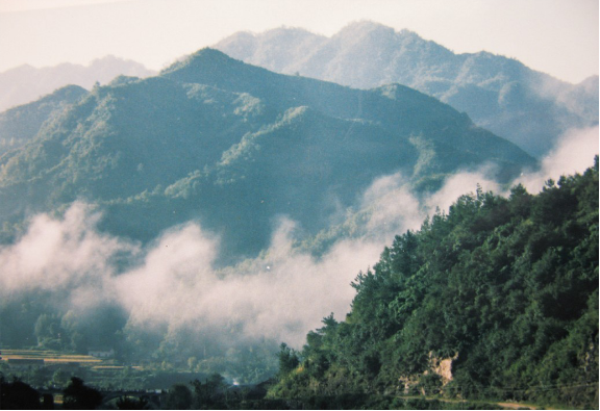
Tianhuashan Mountain National Natural Reserve
Sangyuan National Natural Reserve
Sangyuan National Natural Reserve is located in Liuba County, Hanzhong City, on the southern slope of middle section of Qinling. In August 2008, it was established with the approval of Shaanxi Provincial People’s Government. In September 2009, it was promoted as national natural reserve with the major protective objective of panda and its habitat. The reserve covers a total area of 13,806 hectares with the length of 24km from east to west and the width of 22km from north to south. The reserve keeps original and unique natural environment, immemorial and rare specie, and abundant typical biodiversity. The reserve has abundant animal and plant resources, including six kinds of Class I national protected animal species such as Ailuropoda melanoleuca, Aquila chrysaetos, Rhinopithecus roxellana, Panthera pardus, Moschus moschiferus and Budorcas taxicolor, the Class II national protected animal species such as blackbear, jackal, zibet, Catopuma, Chrysolophus pictus, etc., and the rare plants such as Chinese yew, Abies chensiensis, cercidiphyllum japonicum, eucommia ulmoides, fraxinus mandshurica, trillium, gastrodia elata, etc. Simultaneously, the reserve keeps unique human landscape. It has obvious vertical vegetation distribution with the forest coverage of 99.4%. The bamboo, existing in different elevations, is also abundant there. The major varieties are Bashania fargesii and Fargesia qinlingensis.The good growth and renewing provide abundant foods for the panda living in the habitat.
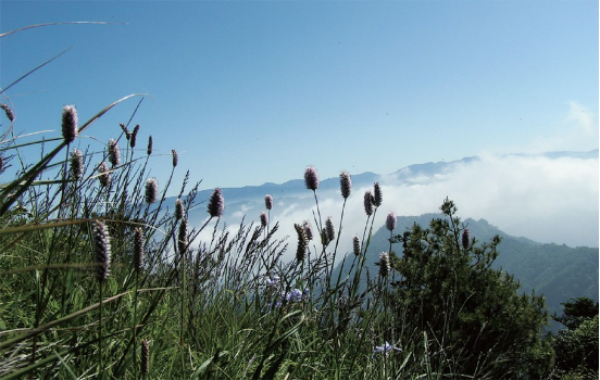
Sangyuan National Natural Reserve


